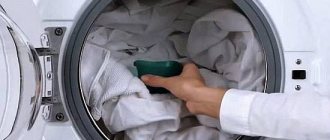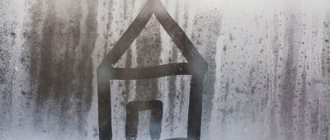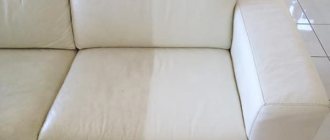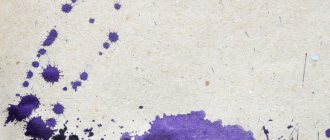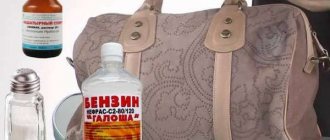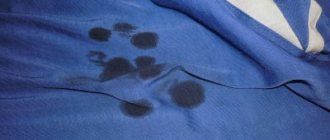Blood stains on the floor, clothes or furniture will become a real problem for those who do not know all the intricacies of the process of removing such contaminants.
In order not to completely ruin an already dirty surface, you need to choose the right cleaning agent. The choice is influenced by many factors: the time of contamination, the area and type of surface that needs to be cleaned.
How and with what you can remove a blood stain, including dried and old ones, we will tell you in the article.
What to do with fresh stains?
Regardless of what surface drops of blood fall on, the first thing to do is to stop the process of absorption of contamination . To do this, wash off the blood with cold water (in other words, wash the item under the tap). If there is no tap nearby, then soak the soiled product for several minutes in a bowl or bucket of cold water.
In a situation where it is not possible to wash off the blood with water, the contamination is carefully blotted with paper or cloth napkins. They are placed under the dirt and the traces are covered on top (the thicker the absorbent layer, the better).
Method 1 - using cold water
- Take a spray bottle and fill it with cold water. It is important to pour cold water, not hot, otherwise the stain will be permanently etched.
- Spray water onto the carpet. If you don't have a spray bottle, take a clean rag and wet it with cold water. If the rag gets dirty, change it. Repeat the process until the stain disappears.
- Use a heater to dry the stain. You can also dry the stain using paper napkins.
- If after drying the stain is clearly visible, then it is worth repeating the entire process. But don't expect that using water will completely remove a stain, unless it's a very small one.
- To fluff up the carpet fibers, simply vacuum it.
How to remove traces using folk remedies?
At the first stage of cleaning, improvised ingredients are used. These are inexpensive, accessible products that, if used correctly, can quickly get rid of red-brown traces of blood.
TOP 5 most effective means at hand:
Hydrogen peroxide is a pharmaceutical product with excellent whitening properties. Blood stains are treated generously with hydrogen peroxide. After fifteen minutes, the red-brown marks will disappear forever.- Laundry soap is a time-tested means of removing dried, ingrained traces of blood.
You can use laundry soap as an ingredient in a soap solution (soap shavings are dissolved in warm water) and as an independent product (soap is rubbed onto the stain). In any case, after treating with soap, the surface should be thoroughly rinsed with warm water. - Baking soda is an excellent cleaning solution for blood stains on clothing, upholstery, and mattresses. Soda is diluted with water in a 1:1 ratio. The resulting composition is applied to the stain and left for twenty minutes. Afterwards, the paste is carefully brushed with a toothbrush in a circular motion, thereby removing congealed blood particles from the surface.
- Citric acid is the best option for removing blood stains from white things. Citric acid powder (10 g) is dissolved in 1 tbsp. water. The paste is applied to the stain and left for fifteen minutes. Afterwards the product is sent for washing.
- Glycerin is a time-tested remedy for fighting blood stains. Glycerin is heated in a water bath and applied warm to bloody marks. After fifteen minutes, wipe the treated area with a cotton pad.
In a situation where available means did not help remove traces of blood without leaving a trace, it makes sense to use more aggressive chemical compounds.
Under no circumstances should you mix several available products into one composition. The result of cleaning with such a “cocktail” is unpredictable.
Coping with divorces
Many housewives complain that after cleaning a light-colored carpet, unpleasant stains remain. How to remove smeared blood from a carpet? It is easy to return it to its original purity in several ways.
First, try a gentle method based on fresh lemon juice or regular vinegar.
- Combine water with vinegar or juice 2:1, soak a sponge in the liquid and soak the stains.
- Place a white cloth soaked in the solution on top and apply pressure.
- After an hour, remove the weight and rag, wash the carpet with water and dry.
You can use baking soda instead of vinegar. Fill the white powder with liquid until you get a runny substance. Apply it to the stains for 30 minutes and clean the pile with water.
If simple methods do not help, prepare a cleaning paste. Mix 10 g of salt and 100 g of starch. Pour 25 g of peroxide into them and stir. Moisten the carpet pile, apply the paste to it and wait until it dries. Remove any remaining product with a vacuum cleaner.
How to clean with special preparations?
When available means are powerless in the fight against blood stains, special professional compounds come to the rescue. TOP 3 most effective means of removing blood stains:
Udalix Ultra stain remover stick
A fast-acting product that removes even the most difficult and stubborn stains:
- blood,
- guilt,
- tea and coffee,
- brilliant green and lipstick.
Preserves the color and structure of the treated fabric. Economical consumption.
Directions for use: moisten the stain with water, then rub it with a pencil until foam forms. After fifteen minutes, the treated area is washed off with warm water. The average cost is 130 rubles. (pencil 35 g). Read reviews here, here and here.
Antipyatin soap
A universal product for removing all types of stains. Active enzymes from bile and natural enzymes will easily clear traces of:
- blood,
- fat,
- guilt,
- tea,
- coffee,
- paints
Directions for use: rub the contaminated area with soap and leave for fifteen minutes, then rinse with warm water. Antipyatin stain remover is effective even at low temperatures.
The average cost is 60 rubles. (soap 90 g). Read reviews here, here and here.
VANISH Oxi Action
Thanks to active oxygen, Vanish will flawlessly clean clothes and home textiles from blood stains. Suitable for both colored and white fabrics .
Directions for use: 100 ml of liquid stain remover is dissolved in 4 liters of warm water.
The contaminated item is soaked in the prepared solution for at least six hours, after which it is washed as usual. For old stains, pre-treatment is recommended . To do this, treat the contaminated area with undiluted stain remover (a special dispenser is used). Fifteen minutes after treatment, the stain removal process is carried out according to the standard procedure. The average cost is 180 rubles. (volume 450 ml). Read reviews here and here.
Before using any special product, you need to find out what surfaces it is intended for and how to use it. It is important to strictly follow all the manufacturer’s recommendations and not exceed the time of interaction of the chemical composition with the contaminated surface (there is a high risk of final damage to the product).
Method 5 – removing stains with hydrogen peroxide
- You will need a 3% peroxide solution. Apply it directly to the stain and let it sit for an hour.
- Blot the stain and repeat the procedure as necessary.
Adviсe
Contact our cleaning company for dry cleaning.
If the stain is already dry, moisten it with vinegar - this will help remove the stain.
In the cold water method, you can add baking soda. This method will be more effective than just water.
Precautions
Ammonia is dangerous if it enters the lungs. You shouldn't breathe them.
Never use hot water.
Wear gloves to avoid getting infected.
Source
Features of cleaning various surfaces
Before you begin removing blood stains, it would be a good idea to inquire about the specifics of cleaning various surfaces. After all, whether the original appearance of the surface will be restored or the product will be completely damaged depends on how well the method for removing bloody marks is selected.
Mattress
The difficulty in cleaning a mattress is that large items cannot be placed in a bathtub or washing machine. The mattress can only be cleaned locally , paying special attention to drying the area that has already been stained (a mattress that is not completely dry is an ideal place for fungi and mold to grow).
Fresh blood stains on the mattress that have not yet had time to be absorbed are blotted with a terry towel soaked in a saline solution (30 grams of salt per liter of water is enough). After the saline solution has completely removed the dirt from the mattress, the wet surface is thoroughly blotted with a dry cotton towel.
If the stains have already dried, a boric acid solution will help clean the mattress. Using an old toothbrush, rub the stain with boric acid diluted with water (1:1 ratio), after which the already cleaned mattress is wiped with a damp sponge and left in a well-ventilated area until completely dry.
Carpet
The choice of products for removing stains from the carpet depends on the material used to make the pile covering.
So, for carpets made of synthetic threads, ammonia will help remove traces of blood (it breaks down blood molecules and accelerates their departure from the fleecy surface).
It is enough to treat the stains with an ammonia solution (3 drops of ammonia are dissolved in 100 ml of cool water) and leave for five minutes.
Afterwards, gently blot the wet mark with a clean, dry cloth. It is important not to exceed the contact time of ammonia with the surface of the carpet. Otherwise, white streaks may appear at the spot.
Clean a wool carpet with a mixture of salt (1 tbsp), starch (2 tbsp) and hydrogen peroxide (70 ml) . The ingredients are mixed in a glass container until smooth and gently applied to the stain with a soft toothbrush. After five minutes, use a napkin to collect the cleaning paste along with blood particles from the pile covering.
If cleaning with improvised means does not lead to the desired result, in order to avoid final damage to the product, you should use dry cleaning services. Home cleaning is also not recommended for carpets with very long pile, expensive silk and viscose coverings.
Walls
If the walls are covered with paper wallpaper, potato starch will help remove blood stains . The dry powder is diluted with water until it becomes a thick paste. The prepared mixture is applied to the stain and left until completely dry. Afterwards, the paste can be easily cleaned off along with the dirt with a dry soft brush.
Thick non-woven wallpaper can be wiped with a sponge soaked in a soap solution (laundry soap is grated and mixed with warm water until it becomes thick sour cream). It is necessary to scrub the wallpaper extremely carefully, avoiding joints at the seams.
Tooth powder paste can help remove blood stains from vinyl wallpaper. The dry ingredient is combined with water, the resulting paste is applied to the wall and left to dry (about twenty-four hours). The remaining paste along with blood particles can be easily cleaned off with a toothbrush.
Painted walls are the easiest to clean. If soap solution, hydrogen peroxide or starch paste does not help remove the blood stain, you can simply repaint the wall.
Linoleum
The success of the process of removing blood stains from linoleum directly depends on how quickly the cleaning began. The easiest way to remove fresh traces is to use ammonia . Use a cotton pad generously moistened with ammonia to cover traces of blood on the floor. After fifteen minutes, wipe the linoleum with a clean damp cloth.
Sheets
Hydrogen peroxide will help remove fresh marks on the sheet. Rinse the cold under cold running water, after which, laying out the laundry on a flat surface, treat the stain with hydrogen peroxide.
Already dried, stubborn stains are much more difficult to remove from the sheets . As an option, you can use the method of treating the stain with vinegar (diluted with water in equal proportions) or the method of pre-soaking using oxygen bleaches.
Cushioned furniture
Quickly removing a blood stain from the upholstery of upholstered furniture is only possible if you quickly react to the contamination that appears. A soap solution will help clean textile upholstery. To prepare it, dissolve 5 tbsp in a liter of water. liquid dishwashing detergent. Moisten the stain with the resulting mixture and leave for thirty minutes.
Afterwards, very carefully, trying not to go beyond the contours of the stain, without pressing, clean off traces of blood with a soft sponge. The already cleaned upholstery of a sofa or chair is wiped with a damp cloth and left to dry in a well-ventilated place.
Cleaning leather upholstery from blood stains is as easy as shelling pears. Simply wipe the stain with a damp sponge. The only condition for proper cleaning is minimal skin contact with water and aggressive detergents. How to remove a blood stain from a sofa, read here.
Cloth
In order not to completely ruin your clothes, the process of removing blood stains is carried out in the following sequence:
- The remaining blood is blotted with a paper napkin.
- The selected product is tested on an inconspicuous area of clothing, and then applied to the stain.
- After ten to fifteen minutes, the dirt is wiped with a damp sponge.
If necessary, repeat the steps several times until the stain is completely removed.
Cleaning products are selected based on the material of the clothing. Stains on white natural fabrics are treated with laundry soap or special oxygen bleaches. Hydrogen peroxide can help clean thick denim.
Soaking in a saline solution will help remove blood stains from light summer dresses . Clothes with blood stains must not be washed at high temperatures or ironed. The result of such actions is ingrained traces of blood and completely ruined clothes. This article will tell you about removing blood stains from jeans, and this article from clothes.
This video will tell you how to remove blood stains from clothes:
When to turn to professionals
In some cases, cleaning blood from carpets on your own will not bring results, but can ruin the appearance of the carpet. It is better to dry-clean long-pile carpets; it is difficult to clean them yourself due to the length of the pile, and it is almost impossible to remove blood.
Which carpets are not recommended to be cleaned at home:
- Silk. They are afraid of moisture and strong mechanical stress.
- Viscose rugs. The pile of such coatings is easily damaged even with a soft brush.
Silk carpet
Viscose carpet
These types of carpets require very careful handling; stain removal methods applied to synthetic coatings are not suitable for them.
You should contact a professional if you are unable to remove the blood stain on your own or if brown spots remain after removing it. It is better to take the coating, information about which you do not know, to the dry cleaner. That is, if you do not know the type of fabric and fibers, the possible shrinkage of the product due to wet cleaning and the stability of dyes, then it is definitely better to give the carpet to professionals so as not to spoil it.
What not to do and why?
To prevent stain removal from resulting in final damage to the product (regardless of what material it is made of), it is worth familiarizing yourself with some restrictions and prohibitions in advance.
It is strictly forbidden to wash away traces of blood with hot water (more than 30°C) . When heated, the protein in the blood instantly coagulates, and the iron particles oxidize, resulting in indelible yellow spots on the surface.
Do not rub fresh traces of blood with paper napkins or a sponge. The result of such actions is an enlarged spot. To remove contamination, the cleaning agent is applied carefully, locally, with light blotting movements, being careful not to touch the clean surface around.
Do not remove traces of blood from carpet, suede or velvet with a rough brush or sponge. Such cleaning will only increase the size of the stain and help the blood penetrate deeper into the thickness of the fleecy surface.
It is prohibited to cut with professional chemical compounds indoors, without gloves and a respirator. You cannot mix ammonia and Whiteness. When combined, these two ingredients release toxic fumes that are hazardous to health.
Cause of yellow-brown spots
Many of our future customers complain about damaged carpets after taking them to the dry cleaner. They are very scared that they will “step on the same rake, twice.” Claims are based on loss of color of products or the appearance of yellow-brown stains. You should know that the main reason for these stains is hidden in the jute base. When making a carpet, jute is often mixed with other fibers and used as the main backing material. A completely jute base is used only in natural products.
When very wet, plant fibers release tannins, which, when dried for a long time, form difficult-to-remove dark yellow or brown stains. Therefore, when cleaning, it is very important to quickly wring out the product, remove water/detergent and dry quickly in a directed air flow. It is important to remove the dirty liquid that flows down several times during drying.
If dried for a long time, natural fiber can cause mold, unpleasant odors and the development of bacteria. Therefore, you should not go for frankly cheap dry cleaning, especially washing. It's up to you to decide, our job is to warn you, because the disappointment of a damaged carpet lasts longer than the joy of a low price.
Adviсe
You can clean fleecy fabrics only in the direction of the pile . The product is applied to the sponge (and not to the dirt), after which, starting from the edges, smoothly moving towards the center, the dirt is treated.
Before applying any product to blood stains, it should be tested on a small, inconspicuous area of the contaminated surface.
Don't have hydrogen peroxide on hand? No problem, it will perfectly replace liquid for storing contact lenses (contains hydrogen peroxide).
A liquid window cleaner (it contains a sufficient amount of ammonia) can replace ammonia in the fight against traces of blood.
Method 2 – Delicate dishwashing detergent
- Mix a solution of 1 spoon of dishwashing detergent and 2 cups of water.
- Take a towel, soak it in the solution and apply it to the stain.
- Using a toothbrush, begin scrubbing the stain, but do not scrub too hard or the stain will penetrate deeper.
- To remove the solution, blot the surface with a clean cloth. If necessary, repeat the procedure. Rinse the solution thoroughly.
- Dry the stain with paper towels.
- To speed up the drying process, point the heater at the stain.
- To fluff up the carpet fibers, simply vacuum it.
Methods of struggle: how and with what can you remove a blood stain, including an old one?
Blood stains on the floor, clothes or furniture will become a real problem for those who do not know all the intricacies of the process of removing such contaminants.
In order not to completely ruin an already dirty surface, you need to choose the right cleaning agent. The choice is influenced by many factors: the time of contamination, the area and type of surface that needs to be cleaned.
How and with what you can remove a blood stain, including dried and old ones, we will tell you in the article.
